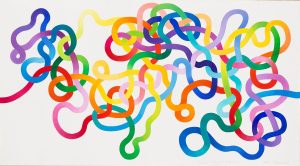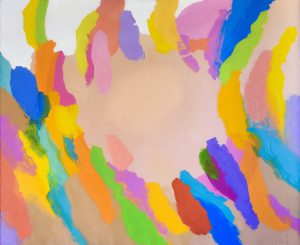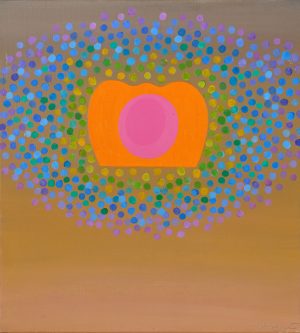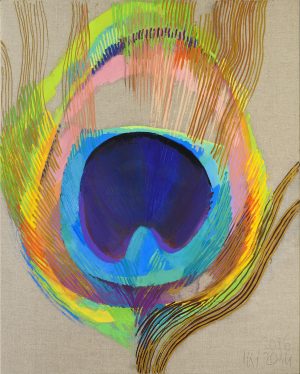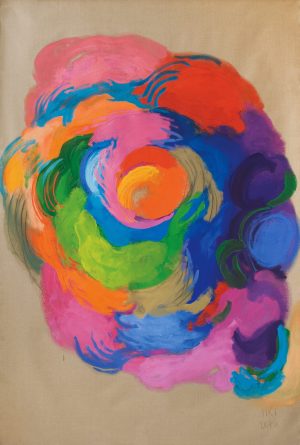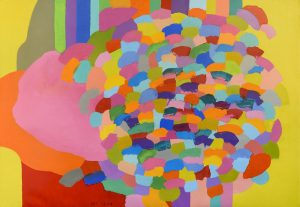
Ilona KESERÜ
"Nothing is no way"
- Year(s)
- 1990
- Technique
- oil and mixed media on canvas
- Size
- 200x140 cm
Artist's introduction
The central axis of Ilona Keserü Ilona's painting practice is provided by her forever-changing spatial and temporal relationship to colours, their research and their various manifestations. In the late 1960s, a definite, thematic tendency emerged in Keserü's work, which she simply called colour research. She wanted to expand her earlier red-orange-pink oriented palette, primarily towards the range of spectral colours. Thus, the range of colours that can be achieved through mixing certain pigments, the analysis of colour resolution, the gradual transition of colours and the upper limits of colour intensity became the subject of many of her works. In the early 1970s, Keserü discovered a wide range of skin tones based on the colour theories of Goethe, which harmoniously counterbalanced the vibrant colours utilised by the artist at the time. From the 2000s onwards, in many of her works, flesh colours appeared as a metaphor of the opposite side of the canvas. The latest stage in her ongoing colour research can be traced back to Keserü's 2001 trip to Rome. Looking at the cleaned surfaces of the ceiling frescoes of the Sistine Chapel, she was confronted with a new – however, common in Michelangelo's time – painterly-optical phenomenon, called cangiante. In essence, it is not the complementary or harmonic colour pairs that are placed side by side, but colour values that mutually enhance each other's light and brilliance and where the choices are made based on personal colour preferences instead of logical reasoning. Keserü was captivated by these unexpected, resounding chords of colour, "sometimes hair-raising things", purple-blue, orange-green combinations, which then served as inspiration for many of her works. Katalin Aknai
More artworks in the artist's collection »




